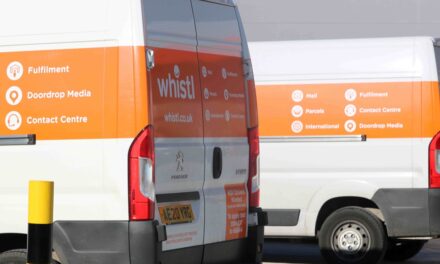
On time delivery need not be fast customers say

Retailers are always trying to come up with innovative USPs, something that sets them apart from the pack and makes them unique. One way that retailers are trying to achieve this is not through their product portfolio, but how they service their customers, or rather, how fast they service their customers.
Which takes us to the delivery process and the growth in next day or even same day delivery. More consumers are using next day or even same day delivery – and often they are doing this simply because the service is on offer and they want to get their money’s worth. But what if it wasn’t? Would the retail world come to a halt? Would customers be outraged and demand their items to be ‘primed’ or ‘fast-tracked’? And is this ‘need’ to receive one’s item ASAP customer driven or retailer motivated?
A recent study by Whistl showed that UK shoppers are “still happy to receive their orders within two to three days” and over a quarter are willing to wait a week to receive their items. And only 12% wanted their purchases to arrive the next day and only 7% “want same day delivery and nothing else”.
So if the need for speed isn’t coming from the customer, then it must come from the other end of the delivery process, the retailer. And the carrier is stuck in the middle, trying to please them both. With pressure from retailers (think Amazon Prime or even the Black Friday fiasco a few years ago), carriers are having to strain their capabilities to the max for a demand that is not really there.
DPD was the first carrier to offer one hour delivery slots and real time tracking with their Predict service. And to some degree other carriers have had to follow suit, hence Yodel Xpect, Hermes offering a four-hour time window delivery or more recently APC Overnight’s APC Pin Point or APC Called. This quest to impress has encouraged customers to expect faster delivery and extensive tracking, even if they don’t really need them – and the carriers are not always able to meet those expectations.
A number of carriers have recently published press releases boasting how their customers have ‘witnessed a marked improvement in their service over the last six months’ or how a certain ‘niche’ publication had shown their overall performance has improved from one year to the next.
Comparing the results of MoneySavingExpert.com’s annual survey on the UK’s best and worst parcel delivery companies, between 2016 and 2017 the number of users giving a ‘good’ performance score went from 62% to 65% and those that perceived a ‘poor’ performance went from 38% to 35%.
So has the link between retailer and carrier affected the carrier – customer relationship? Are parcel carriers in the UK generally performing well or are they underperforming? Is it really that the carriers are underperforming, or is it that customers are growing more demanding and raising their expectations? And if you are in the process of selecting a carrier, who can you trust in order to get a fair view regarding any given carriers performance?
Triangle Management Services, with its long running and established UK Domestic B2B and B2C Express Parcels Distribution Surveys, has developed a neutral and robust benchmarking method and vehicle with aims to give an unbiased and independent point of view on how shippers and everyday parcel carrier users view and rank their chosen parcel carrier performance.
With a base of over 900 respondents, Triangle has built its own net promoter index asking expert respondents how likely they are to recommend their chosen and current carriers. And for the last couple of years there has been a clear trend which shows an increasing dissatisfaction on carrier performance. But which factors have caused such a decline?
Our findings show that, for respondents, the most important factors when rating a carrier are customer service and the quality of transport. And by quality of transport we do not mean ‘fast’ or ‘free’ but whether the carrier delivers on time, collects on time or has fewer failed deliveries, ‘on time’ can be next day, 2-3 days, or even 3-5 days, just ‘on time’. Interestingly, those are the two factors experiencing the biggest gaps between how important they are for the shipper and how well the carrier performed.
Triangle is currently developing the 2018 edition of its UK Domestic B2B and B2C Express Parcels Distribution Surveys and it will be interesting to see if the trend continues and the level of satisfaction on express parcel carrier continues to decline.
If you want more information on the surveys please contact [email protected] or call 01628642910.












